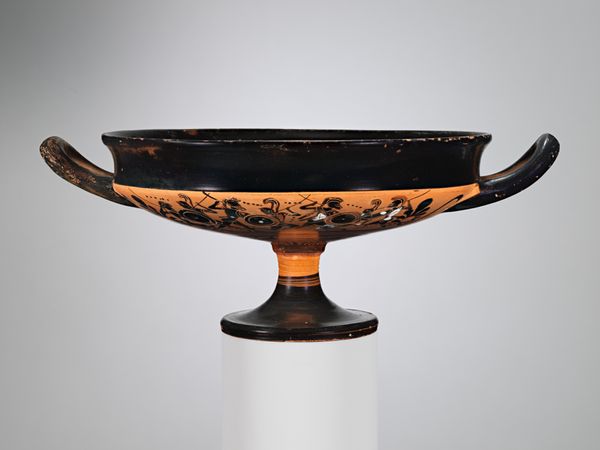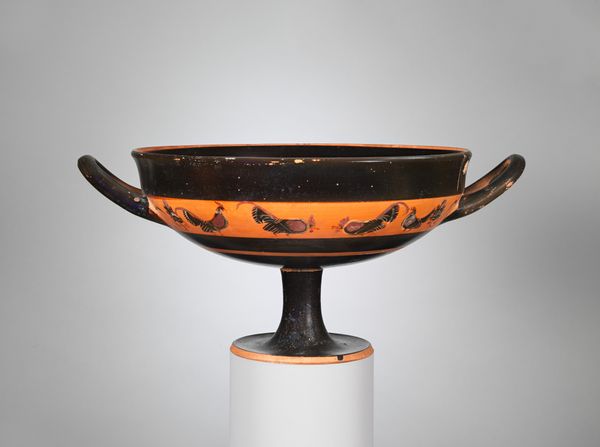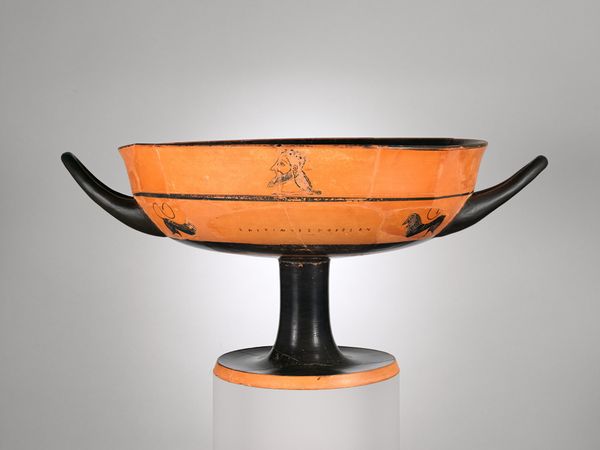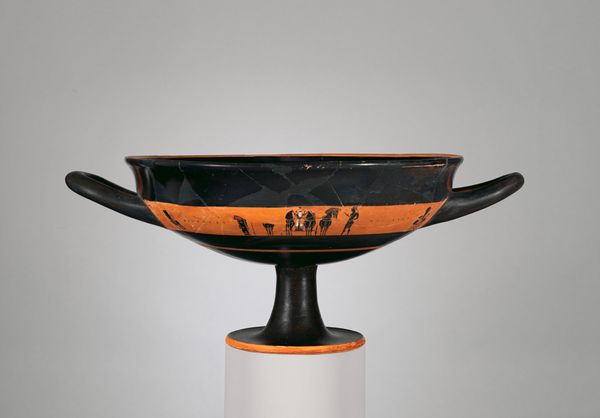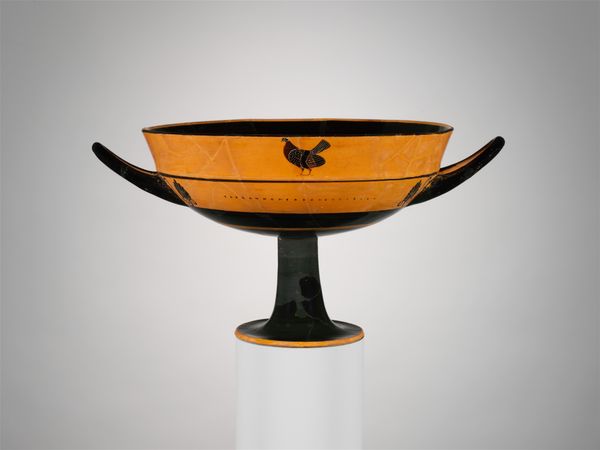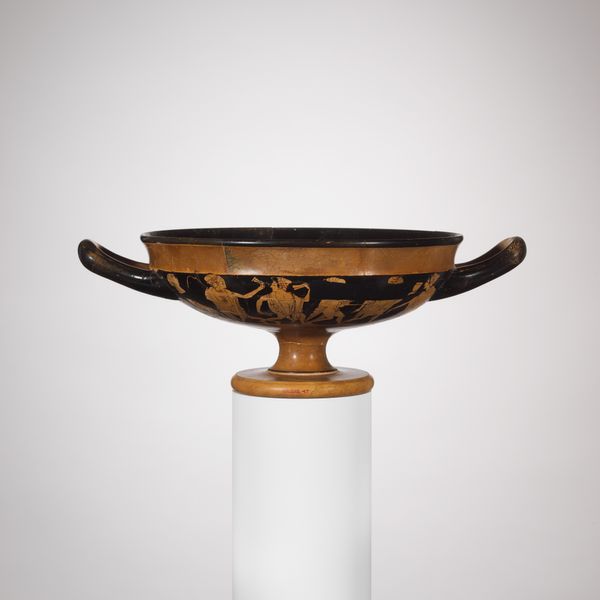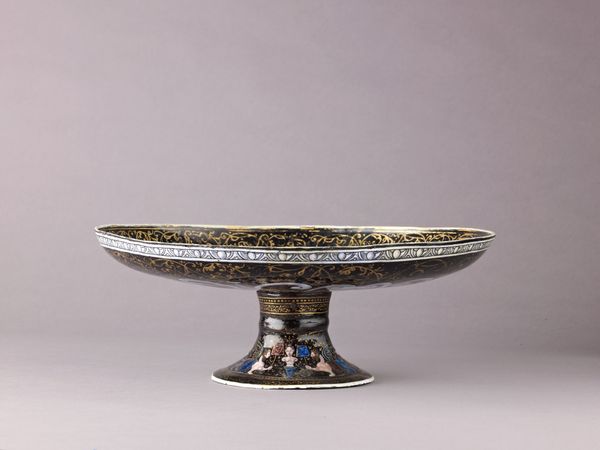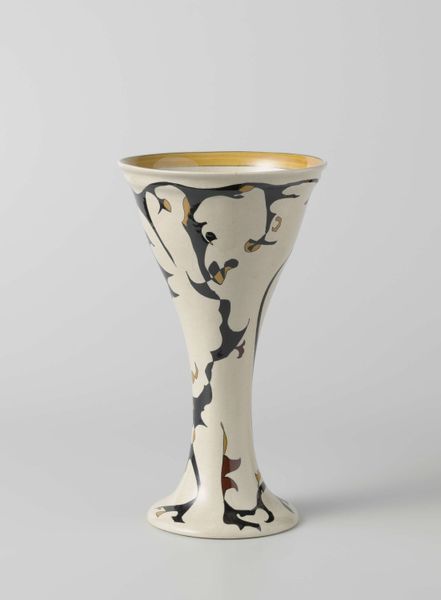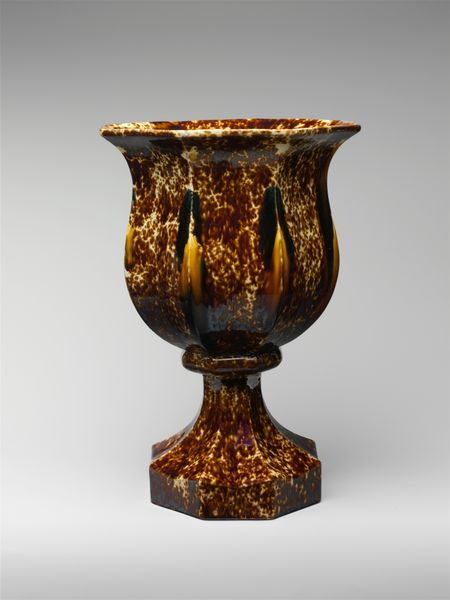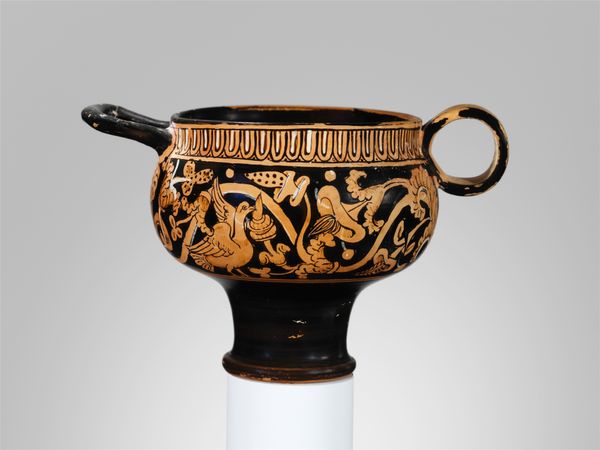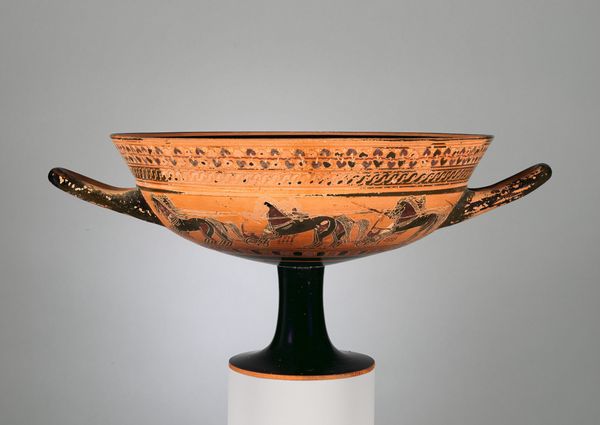
painting, ceramic, terracotta
#
painting
#
greek-and-roman-art
#
ceramic
#
vase
#
figuration
#
roman-art
#
female-nude
#
genre-painting
#
terracotta
#
nude
#
erotic-art
Dimensions: H. with handles 5 1/16 in. (12.8 cm) H. of bowl 4 15/16 in. (12.6 cm) diameter of bowl 13 1/8 in. (33.4 cm) diameter of foot 4 13/16 in. (12.2 cm)
Copyright: Public Domain
Curator: This terracotta kylix, dating back to 510 BC, offers a fascinating insight into ancient Greek pottery. You can find it on display here at the Metropolitan Museum of Art. Editor: Whoa, I'm immediately struck by the contrast! The slick black glaze really makes the figures pop. It's like the original stark visual metaphor—luxury on display! Curator: Indeed. This palmette eye-cup, crafted from terracotta and adorned with painting, exemplifies the red-figure technique prevalent during that era. Notice how the artist masterfully used negative space to define the forms. Editor: Okay, the figures are all kind of jammed on there and they are more decorative than anatomically perfect. Are these like...scenes from everyday life? I guess so. I mean, everyone’s gotta drink, right? Curator: To some degree, but within the wider field of genre painting we can consider figuration withing that specific, coded register; moreover we might want to think through such theoretical problems and consider erotic dimensions when considering such a vessel like this... Editor: Ah, a "party cup"! Okay, I can get with that. The repetition of the palmette design does create this dizzying feeling, almost like you’ve already had a bit too much wine! The little red circles in between are just delicious details, aren’t they? Curator: Absolutely, the recurring motifs offer an important study into structural analysis as well. Editor: I think it would have been lovely to use at a banquet. Can you imagine it—dim light, clinking, good friends… I wonder how many stories this little vessel could tell, you know? Curator: It's tempting to ascribe sentiment. What truly speaks volumes to me, however, is the formal arrangement of its constitutive visual parts: line, shape, and careful spatial dynamics and how, when deconstructed, we encounter their significance in isolation. Editor: Always gotta pull back and find order, huh? Curator: The order reveals the truth. Editor: For you, maybe. I think the truth might be in the mystery of not fully understanding, and instead connecting with that long, long echo from the past.
Comments
No comments
Be the first to comment and join the conversation on the ultimate creative platform.



